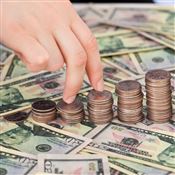Discount Calculator
How do you calculate discounts? Use these free calculators to see how much you'll pay before and after discounts are applied to your next purchase.
 |
Shopping can sometimes feel like a math quiz.
When discounts are applied, how much are you really paying?
How do I calculate a discount percentage?
To calculate the discount percentage taken off your item, follow these steps:
- Find the original price of the item before the discount.
- Find the price of the item after the discount was applied.
- Subtract the after-discount price from the original price.
- Divide that by the original price.
- Multiply by 100.
- This number is the percentage that was deducted from the item price.
Calculate discount percentage example
$125 (original price) - $100 (after-discount price) = $25
25 / $125 = 0.2
0.2 x $100 = 20
Discount percentage = 20%
How to find the original price before a discount
To calculate the original price of an item before the discount is applied, follow these steps:
- Find the price of the item after the discount was applied.
- Find the discount percentage that was applied to the price.
- Divide the discount percentage by 100.
- Subtract that number from 1.
- Divide the after-discount price by that number.
- This number is the original price of the item, pre-discount.
Calculate price before discount example
20 (discount percentage)/ 100 = 0.2
1 - 0.2 = 0.8
$100 / 0.8 = 125
Price before discount = $125
How to find the price after a discount
To calculate the price of an item after the discount is applied, follow these steps:
- Find the original price of the item.
- Find the discount percentage that will be applied to the price.
- Divide the original price by 100.
- Multiply by the discount percentage.
- Subtract that number from the original price.
- This number is the discounted price.
Calculate price after discount example
$125 (original price) / 100 = 1.25
1.25 x 20 (discount percentage) = 25
$125 - 25 = $100
Price after discount = $100
How do you calculate a 5% discount?
To calculate a 5% discount off your item, follow these steps:
- Find the original price of the item.
- Divide the original price by 100.
- Then, multiply by 5.
- Subtract that number from the original price.
- The new number is the discounted price.
5% Discount Example
$200 (original price) / 100 = 2
2 x 5 = 10
200 - 10 = 190
Discounted price: $190
How do you calculate a 10% discount?
To calculate a 10% discount off your item, follow these steps:
- Find the original price of the item.
- Divide the original price by 100.
- Then, multiply by 10.
- Subtract that number from the original price.
- The new number is the discounted price.
10% Discount Example
$200 (original price) / 100 = 2
2 x 10 = 20
200 - 20 = 180
Discounted price: $180
How do you calculate a 20% discount?
To calculate a 20% discount off your item, follow these steps:
- Find the original price of the item.
- Divide the original price by 100.
- Then, multiply by 20.
- Subtract that number from the original price.
- The new number is the discounted price.
20% Discount Example
$200 (original price) / 100 = 2
2 x 20 = 40
200 - 40 = 160
Discounted price: $160
How do you calculate a 25% discount?
To calculate a 25% discount off your item, follow these steps:
- Find the original price of the item.
- Divide the original price by 100.
- Then, multiply by 25.
- Subtract that number from the original price.
- The new number is the discounted price.
25% Discount Example
$200 (original price) / 100 = 2
2 x 25 = 50
200 - 50 = 150
Discounted price: $150
What are the types of discounts?
Percentage discount: This is when a percentage (between 1 - 100) is deducted from the item's price (for example, 10% off $50 = $45)
Flat amount discount: This is when a flat dollar amount is deducted from the item's price (for example $5 off $50 = $45)
"Buy one, get one" discount: This is when you buy one item at full price and get a second item discounted (or even free!)
Quantity discount: This is when the retailer gives you a discount for buying multiple items
Trade discount: This is a discount usually offered by a wholesaler to a retailer (for example, a flower wholesaler giving a discount to a florist who sells their flowers)
Bottom Line
Before buying something, it pays to shop around and find the best deal. But even if you're getting a discount, don't go in unprepared.
With these calculators, you'll know exactly how much you're being charged so you can shop with confidence.
Holly Zorbas is a assistant editor at CreditDonkey, a credit card comparison and reviews website. Write to Holly Zorbas at holly.zorbas@creditdonkey.com. Follow us on Twitter and Facebook for our latest posts.
|
|
| ||||||
|
|
|












